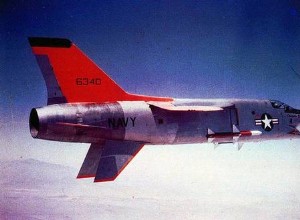The Vought XF8U-3 Crusader III was an aircraft developed by Chance Vought , in response to the competition launched in December 1955 by the US Navy to produce a naval interceptor of the Mach 2+ class. This aircraft was a competitor to the McDonnell F4H Phantom II to succeed the (future) famous Chanc




